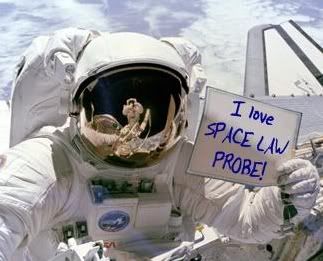10.30.2007
The moon this time
In addition to making space history and global headlines, last week's liftoff of Chang'e I, China's first moon probe, relaunched the older than moon rocks debate about human intentions and lunar resources.
For example, linked on Instapundit today we find Andrew Smith's Guardian piece in which the writer voices a not uncommonly held view that the new space race differs from the first in that it ain't about science or discovery, but rather, "plundering the moon."
Amid the talk of helium-3 there's little legal discussion, however for that we can pick from a wealth of law commentary, from decades to minutes old, addressing aspects of the complex legal issues concerning lunar resources. I'll be posting more of those; and for now, Prof. Glenn Reynolds, who lamented on his aforementioned blog "the defeatist, anti-humanity tone of many of the comments" to Smith's piece, and suggests that "private property rights are likely to be both more environmentally friendly and more wealth-creating than centralized regulatory schemes," offers a well-seasoned but still insightful article he wrote with Robert P. Merges, on Space Resources, Common Property, and the Collective Action Problem (New York University Environmental Law Journal, 1997).
In it, Glenn (who has been writing, teaching and thinking about this stuff way longer than he's been doing that little blog thing he does) and his co-author conclude:
The waning of enthusiasm for common heritage schemes in the space context poses a challenge for space law, and for space development enthusiasts: the challenge of coming up with something that addresses the most important concerns motivating "common heritage" proposals without embodying the statist and anti-market character that such proposals tend to share. Properly crafted, property rights approaches are likely to be lower in cost, and better at protecting the environment, than are centralized bureaucratic regimes. We have suggested some considerations involved in applying property rights to space resource development. We hope that others will join in the conversation.
Many have. And I second that excellent invitation. (And if you would like to share a rebuttal to the article, or offer related thoughts or writings -- for or against moon "plundering"? -- don't hesitate to forward to me for linking or plund-- I mean, posting.)
The conversation continues.
* * *
UPDATE: By the way, yes, you will find among the materials presented at this month's gathering of FAA's Commercial Space Transportation Advisory Committee (COMSTAC), a powerpoint on China's Space Activities (especially for those who can't get enough COMSTAC PowerPoints, and who can?) (Hat tip HobbySpace.)






